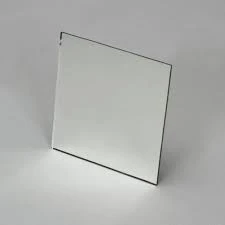

The Evolution and Applications of Float Flat Glass
Float flat glass, a ubiquitous material in modern architecture and design, has transformed our perception and interaction with the world around us. Originating from a revolutionary manufacturing process developed in the mid-20th century, float glass has become integral to various industries, offering unparalleled transparency, durability, and aesthetic appeal.
The float glass process, invented by Sir Alistair Pilkington in the 1950s, involves floating molten glass on top of molten tin. This unique method produces glass sheets with smooth, parallel surfaces and uniform thickness. Unlike traditional glassmaking techniques, which often resulted in imperfections and irregularities, the float process ensures a high-quality product that meets the rigorous demands of contemporary applications.
One of the primary applications of float flat glass is in building construction. The modern architectural landscape heavily relies on glass to create striking facades and maximize natural light. This not only enhances the aesthetic appeal of buildings but also contributes to energy efficiency. Well-designed glass installations allow for passive solar heating, thereby reducing the need for artificial lighting and climate control. Moreover, advancements in low-emissivity (low-E) coatings have further improved the energy performance of float glass by reflecting heat while allowing for the transmission of visible light.
In addition to its architectural uses, float flat glass is essential in the automotive industry. Windshields and windows made from this material offer safety and visibility while contributing to the overall elegance of vehicle design. The strength and clarity of float glass are vital for manufacturing automobile glass that meets specific safety standards. Moreover, laminating float glass with a layer of polyvinyl butyral (PVB) enhances its shatter resistance, ensuring that passengers are protected in the event of an accident.

Float flat glass is also making significant strides in the electronics field. The rise of electronic devices necessitates high-quality glass for screens, touch panels, and monitors. Manufacturers utilize ultra-thin float glass to develop displays that are not only lightweight and durable but also provide excellent optical clarity. The versatility of float glass allows it to be manufactured in various sizes, thicknesses, and finishes, catering to the diverse needs of the tech industry.
Environmental sustainability is becoming increasingly vital across all sectors, and the float glass industry is no exception. Many manufacturers are implementing recycling programs to reduce waste and energy consumption during production. Float glass can be recycled repeatedly without losing its inherent quality, making it an eco-friendly choice. By incorporating recycled glass into the manufacturing process, companies can significantly decrease their carbon footprint and contribute to a circular economy.
The aesthetic possibilities offered by float flat glass are continuously expanding. From artistic installations to innovative architectural designs, glass has become a medium for creative expression. Designers often experiment with different treatments, such as tinted, frosted, or patterned glass, to achieve unique visual effects. The ability to manipulate light and perception through glass offers limitless opportunities for artists and architects alike.
In conclusion, float flat glass has evolved from a simple material to a fundamental element in modern construction, automotive manufacturing, electronics, and design. Its unique properties, combined with the ongoing advancements in technology and sustainability, ensure that float glass will continue to be at the forefront of various industries. As we move forward, the importance of this material will only grow, shaping the environments we inhabit and the way we interact with the world around us. Whether it’s in a high-rise building, a sleek vehicle, or the latest gadget, float flat glass remains a testament to innovation and versatility in contemporary life.